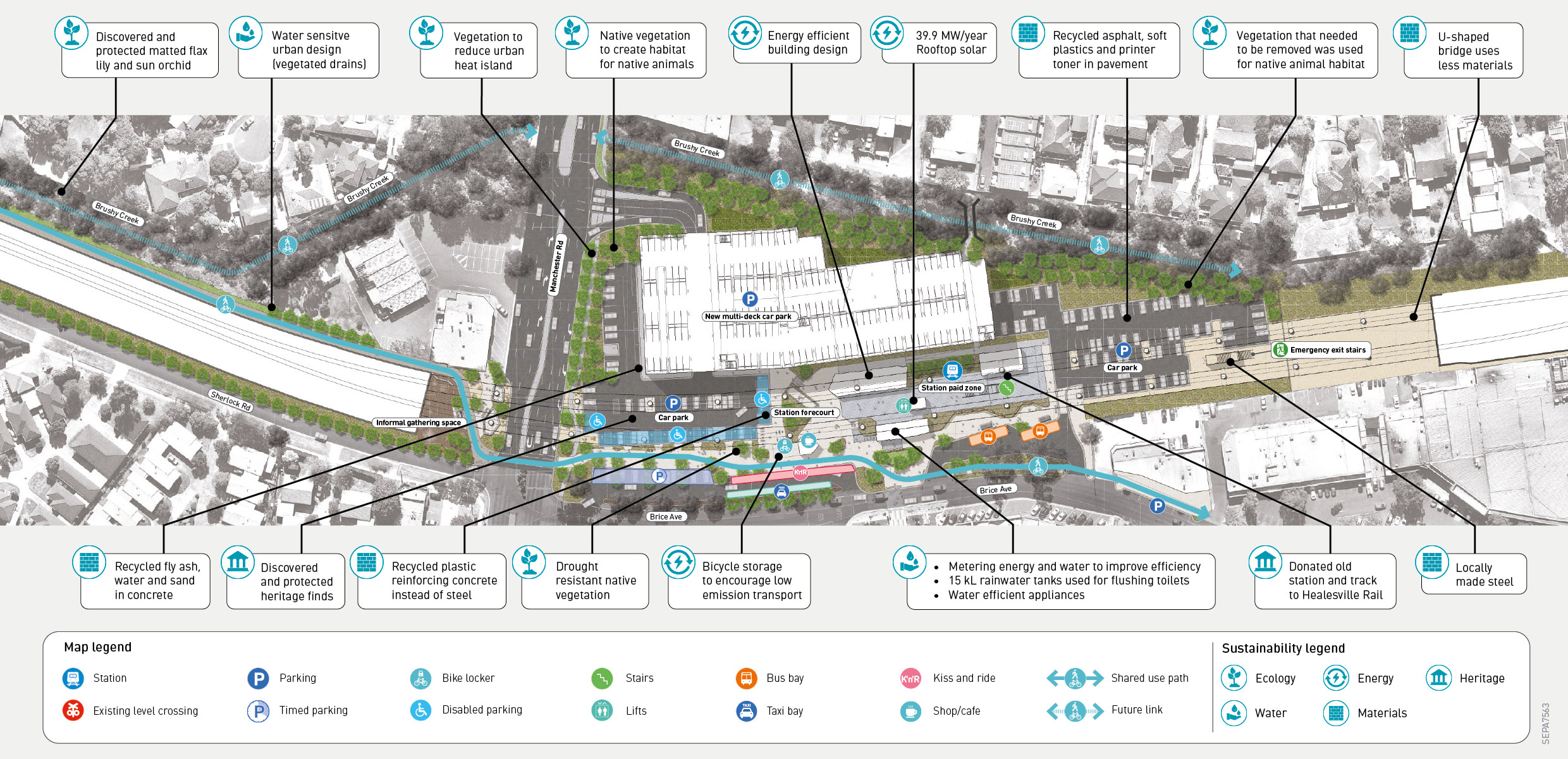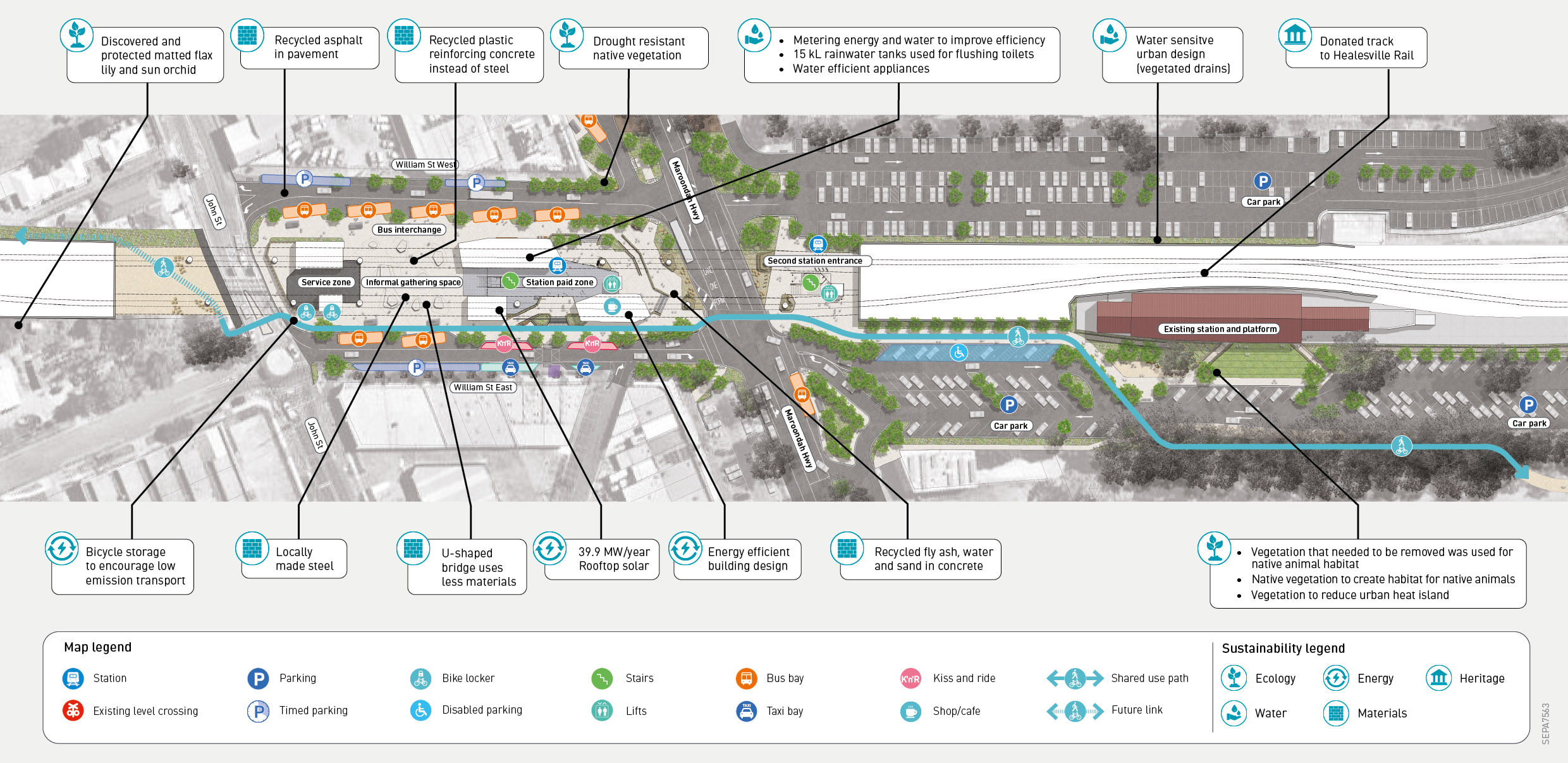
We’re committed to building sustainable infrastructure for Melbourne’s transport network.
As part of receiving a five-star Green Star rating at both stations, we’ve implemented initiatives including solar power, rainwater collection and using waste products in asphalt.
Saving power through solar
By installing solar panels on the station canopy and roof, we’re able to generate 38% of the power needed to run the stations. That’s the equivalent of more than three homes-worth of electricity.
Generating green power is only one way we reduce energy consumption. The buildings are equipped with energy efficient appliances, as well as a more efficient urban design. This helps save an extra 6.3 homes-worth of energy across both the Mooroolbark and Lilydale stations.
We’re also encouraging commuters to choose green travel options by building a new parkiteer cage and installing more bike hoops. There are also better walking and cycling connections to the stations, so people can choose active transport modes where possible.
Reducing water waste
Over 60% of the water used at this station comes from rainwater harvesting. It also saves water by using rainwater sensitive urban design in our landscaping and water saving appliances throughout.
There is a 15 kilolitre (kL) rainwater tank at this station, collecting water from the platform canopies and station roof. We also installed water efficient appliances, which saves an extra 14% compared to standard appliances
Through water sensitive urban design, we have decreased the amount of runoff from the station and improved the water quality that eventually makes its way into rivers and streams.
Using drought resistant vegetation not only adds to the green, rural feel of Mooroolbark and Lilydale, but it also saves 1,862 kL per year.
Giving rubbish a second life as car park asphalting
We’ve used reconophalt for the surface level car park and shared user paths at Mooroolbark
This recycled product is made in Australia, aimed at surfacing roads with things that would otherwise end up in landfill. It’s made of recycled printer cartridges, waste glass, fly ash, old tyre rubber and soft plastics like old shopping bags.
390 tonnes of reconophalt are equivalent to nearly 330,000 plastic bags and over 8000 printer cartridges.
Discovering and integrating history into both new stations
Before works commenced at Mooroolbark, we undertook an archaeological dig at the site of the old Station Master’s house.
The house was built where the new multi-deck car park now stands, and we found many interesting artefacts during the dig.
This included a shoe, several children’s toys, utensils, and an old cigarette tin.
We also worked with the heritage in Lilydale for this project. The former Lilydale Station was built in 1882, when Lilydale was a rural town on the outskirts of Melbourne.
The new precinct design respects its heritage through the inclusion of a new forecourt on the east side with seating and a shared path to the main trail head of the Warburton Rail and Yarra Valley cycle trails.
We’ve used some of the red bricks from the old John Street bridge to build the new seats in the old Lilydale Station forecourt. Red bricks are used in seating near the former station building. The heritage-listed building provides the perfect setting for the bricks for years to come.
Learn more about our sustainable practices in the maps below or check out our sustainability policy.

Mooroolbark station precinct sustainability map

Lilydale station precinct sustainability map